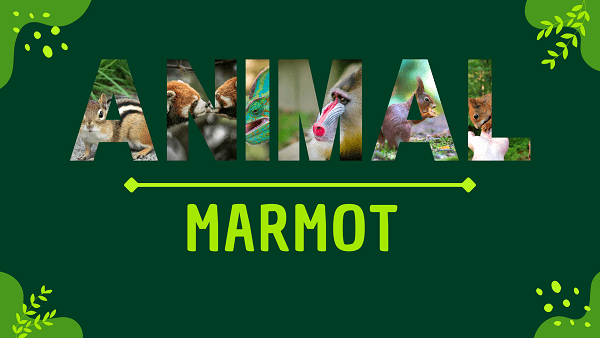Marmot | Facts, Diet, Habitat & Pictures
Home » Animals » Marmot | Facts, Diet, Habitat & Pictures
Marmot Overview
Appearance
Marmots are robust, ground-dwelling rodents known for their stout bodies and short legs. They typically have dense, brownish-gray fur that helps insulate them in mountainous habitats. Marmots possess strong, sharp claws adapted for digging burrows.
Their rounded heads feature small, rounded ears and short snouts. Marmots display a distinctive hibernating behavior, often spending much of the winter in deep sleep within their underground burrows.
Origins And Evolution
They are part of the rodent family Sciuridae, and their origins trace back to Eurasia. Fossil evidence suggests their existence dates back to the Miocene epoch, around 20 million years ago. These early marmot ancestors likely lived in forested habitats. Over time, marmots evolved to adapt to alpine and mountainous regions, developing their characteristic burrowing behavior.
Their social structures, with complex underground colonies, evolved as a strategy for survival in harsh environments. Marmots share a common ancestry with ground squirrels and prairie dogs, all belonging to the same rodent subfamily. Their evolution showcases the remarkable adaptability of mammals to various ecological niches.
Behavior and Lifestyle
Marmots are highly social rodents, living in complex underground burrow systems in alpine meadows and rocky mountainous areas. They are diurnal, active during the day, and rely on their keen eyesight to detect predators. Herbivorous, primarily feeding on grasses, herbs, and other vegetation.
Their behavior includes sunbathing to regulate body temperature and emitting loud warning calls to alert their colony to approaching threats. They hibernate through the winter, with some individuals entering a state of torpor for several months to conserve energy in cold climates.
Marmot Scientific Classification
- Kingdom: Animalia
- Phylum: Chordata
- Class: Mammalia
- Order: Rodentia
- Family: Sciuridae
- Subfamily: Sciurinae
- Tribe: Marmotini
Marmot Locations
- North America
- Europe
- Asia
- The Himalayas
- The Rocky Mountains
- The Alps
- The Carpathian Mountains
- Siberia
- Central Asia
- The Caucasus Mountains
Fast Facts
- Name: Alpine Marmot
- Scientific Name: Marmota marmota
- Habitat: Mountain Meadows
- Diet: Herbivorous Grazer
- Physical Features: Stout Body
- Nocturnal: Mostly Diurnal
- Solitary: Social Burrowers
- Unique Order: Rodentia Family
- Lifespan: 15 Years
- Conservation Status: Least Concern
- Fun Facts: Hibernation Masters
Physical Characteristics
- Color: Varied Fur
- Skin Type: Dense Fur
- Top Speed: Moderate Runner
- Lifespan: Around 15 Years
- Weight: Stocky Build
- Length: Short Tail
- Age of Sexual Maturity: 2 Years
- Age of Weaning: 4 Weeks
Marmot FAQs
What is a marmot, and where are they commonly found?
They are ground-dwelling rodents found in alpine meadows and mountainous regions across North America, Europe, and Asia.
Are marmots herbivores or omnivores?
Marmots are herbivores, primarily feeding on a diet of grasses, herbs, and vegetation.
Do marmots hibernate, and if so, how long does their hibernation last?
Yes, marmots hibernate through the winter months, and their hibernation can last up to 6 or 7 months, depending on the species and location.
Are marmots social animals, or do they live alone?
Marmots are highly social animals, often living in colonies with complex underground burrow systems.
What is the purpose of the loud whistles or calls made by marmots?
Marmots use these calls as warning signals to alert their colony to approaching predators.
Related:
- Tarantula
- Mackerel
- Mackerel
- Sea Stars
- Bird
- Amphibians
- Vertebrates
- Sand Dollars
- Barnacles
- Scallop
- Brittle stars
- Tilapia
- Carp
- Krill
- Catfish
- Grouper
- Calm
- Yak
- Yucatan Brown Brocket
- White-tailed Deer
- Uakari
- Utahraptor (Dinosaur)
- Qinghai Lake Naked Carp
- Qilian Shrew
- Qinling Panda
- Qacha’s Nek long-fingered Frog
- Red Fox
- Red Panda
- Rockhopper Penguin
- Salamander
- Snail
- Storks


